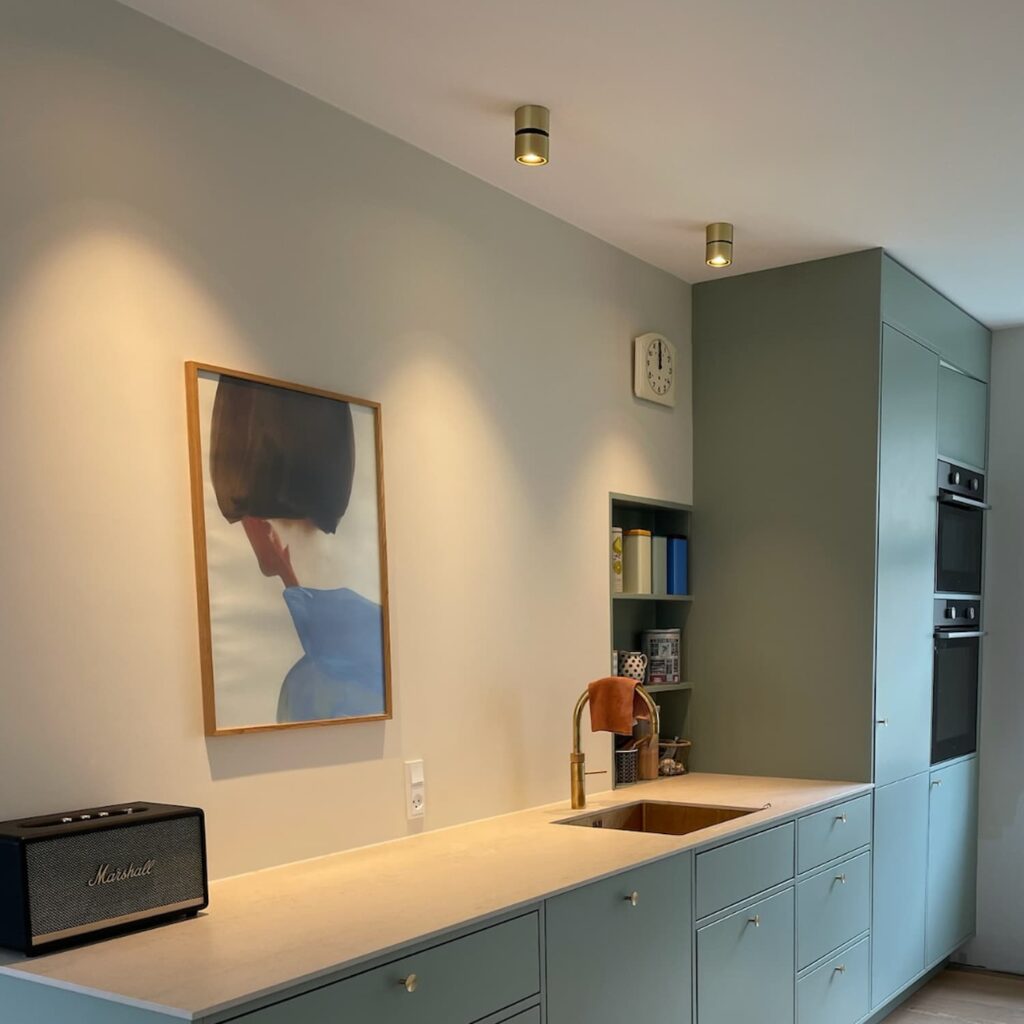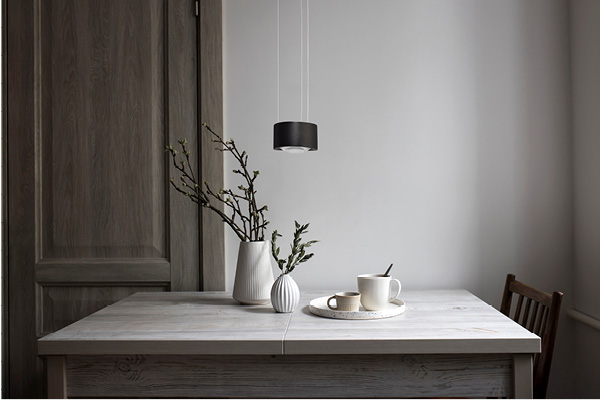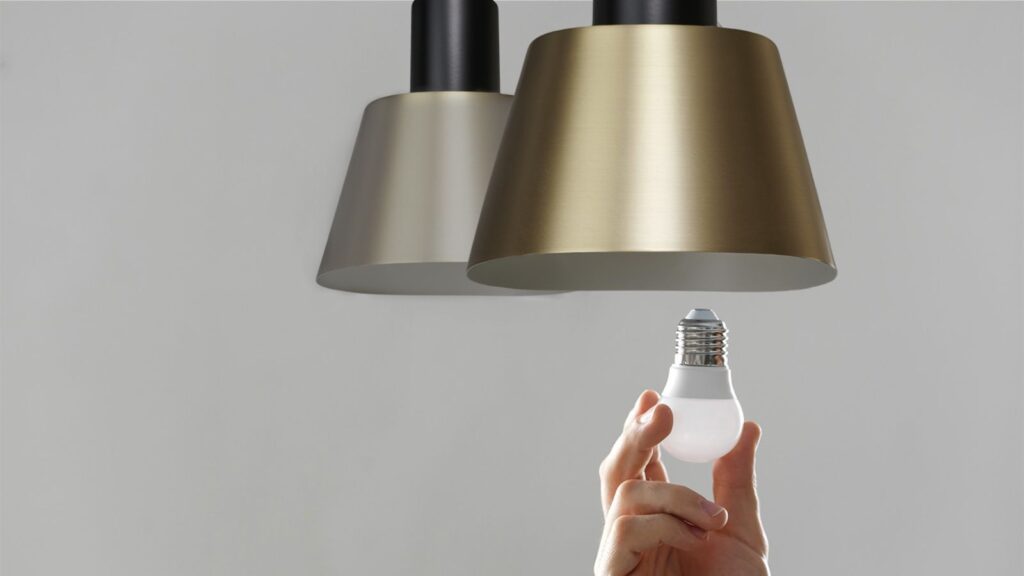Planning kitchen lighting
- Af Søren Rasmussen
- Last updated 17. May 2024
When it comes to creating a kitchen that is both functional and inviting, lighting plays a crucial role. A well-thought-out kitchen lighting plan can transform an ordinary space into a masterpiece of design and functionality. This guide will lead you through the key considerations before purchasing and installing your lighting fixtures, so you can achieve the perfect lighting in your kitchen.

A bit about the author:
Søren Rasmussen
Share post:
Related posts:
Understand the layout of your kitchen
The layout of your kitchen is the foundation for your lighting plan.
Consider the placement of key elements such as countertops, kitchen islands, and cabinets, as these areas require different types of lighting to maximize functionality.
Task lighting is essential over work areas, while ambient lighting can create a warm and inviting atmosphere.


Types of kitchen lighting:
There are three primary types of lighting to consider:
- Task Lighting: Focuses light where you need it most, such as under upper cabinets to illuminate countertops.
- Ambient Lighting: Adds softness and depth to the room, often through the use of indirect light sources.
- Accent Lighting: Used to highlight architectural features or decorative elements.
Task lighting
Task lighting is focused light designed to illuminate work areas to enhance functionality and safety. In a kitchen, this is particularly important over areas where cooking and preparation take place, such as countertops, sink, and stove.
Examples of use:
- Under-cabinet lighting: LED strips or small downlights mounted under the upper cabinets provide direct light on the countertop without casting shadows. This is ideal for tasks such as chopping, reading recipes, and cooking.
- Pendants: Over a kitchen island or dining area, pendant lights can provide both task lighting and contribute to the room’s aesthetics. Choose a pendant with a directed light source to focus the light on work areas.
Ambient lighting
Examples of use:
- Ceiling Lights: A central ceiling light can provide an even spread of light that contributes to the overall ambiance of the room. Choose a fixture with a soft, diffused light source to avoid harsh shadows.
- LED Panels: Mounted in the ceiling, these provide even and discreet lighting that can cover large areas without being overwhelming.
Accent lighting
Accent lighting is used to highlight architectural features, artworks, or other elements in a room, adding depth and dimension. In a kitchen, this can be used to showcase beautiful cabinetry, shelving, or artworks.
Examples of use:
- Track Lights: These are fantastic for creating focused light that can be directed towards specific elements in the kitchen, such as artworks, open shelving, or a special tile wall.
- Downlights: Can be installed in the ceiling to cast light on sculptural elements or a special texture on a wall, adding subtle yet effective visual interest.
By combining these different types of lighting, you can create a multi-dimensional and flexible lighting system in your kitchen that is not only functional but also aesthetically pleasing. Remember to consider the color temperature and brightness of the light sources to ensure they meet the room’s needs and the desired atmosphere.
Considerations before purchase
Here's what you should consider before getting started
- Budget: Set a realistic budget for your lighting project, and consider quality products as an investment in your home.
- Style & Design: Choose lighting solutions that complement your kitchen’s style. ANTIDARK offers a wide range of minimalist and timeless designs that can match any space.
- Energy Consumption: Consider energy-efficient solutions to reduce your home’s energy consumption and save in the long run.
The basic principles of lighting planning.
A successful kitchen lighting plan combines various light sources to create a flexible and adaptable environment. It’s important to create a balance where no area is too dark or overly illuminated. Lighting planning is an essential part of any interior design, especially in functional spaces like kitchens. Here are some basic principles for lighting planning. By using these basic principles of lighting planning, you can create a functional and inviting environment that meets the specific needs of your space.

1. Layering of Light
- Combine different types of lighting: To create a flexible and dynamic lighting environment, it’s important to combine task lighting, ambient lighting, and accent lighting.
- Balance: Ensure a good balance between the different light sources to avoid areas that are too bright or too dark.
2. Quality of light
- Color Temperature: Choose light sources with an appropriate color temperature for the space. Warm light (2700K-3000K) is often more inviting in residential areas, while cooler light (3500K-5000K) may be better for work-oriented areas like the kitchen. Learn more about color temperature here.
- Color Rendering Index (CRI): A high CRI value is important for colors to appear natural and vibrant under the light.
3. Light Intensity and Control
- Dimmability: Installing dimmable light sources allows for adjusting light intensity as needed and creating different moods.
- Energy Consumption: Consider energy-efficient light sources like LEDs, which reduce energy consumption and have a longer lifespan.
4. Direction and dispersion
- Avoid glare: Place and aim the light sources so they do not cause direct glare. This can be achieved by using diffusers or by strategically placing the light sources.
- Uniform distribution: Ensure a uniform distribution of light to avoid dark areas and shadows, especially on work surfaces.
5. Aesthetics and Design
- Integrate with the interior: Choose light sources and fixtures that complement the room’s style and design.
- Functionality meets design: Remember that lighting is both a functional and aesthetic component of the space. Choose solutions that meet both needs.
6. Safety and control
- Safe installation: Ensure that all electrical installations comply with local building codes and safety standards.
Easily accessible control: Place light switches and dimmers so they are easily accessible and intuitive to use.
Tips for kitchen lighting
If you need even more tips for kitchen lighting, read more here:

Installation of kitchen lighting
The installation of kitchen lighting requires careful planning and consideration of electrical requirements. It is often best to consult with a professional to ensure safe and correct installation.

Maintenance and updating of kitchen lighting
Regular maintenance ensures that your lighting remains beautiful and functional. Also consider easy updates, such as changing bulbs or adding smart lighting features to keep your kitchen up-to-date.

Frequently asked questions - FAQ
The brightness in a kitchen is measured in lumens. As a general rule, it is recommended to have around 300-400 lumens per square meter, distributed evenly throughout the kitchen. For work areas, you may need higher lumens to ensure sufficient task lighting.
The best approach is a combination of task lighting, ambient lighting, and accent lighting. Task lighting for work areas, ambient lighting for general illumination of the space, and accent lighting to highlight architectural features or decorative elements.
The size of pendant lights should be proportional to the size of the kitchen island. A good rule of thumb is that the diameter of the lamp should be about 1/3 of the island’s width.
Yes, LED lights are very effective for kitchen lighting. They are energy-efficient, have a long lifespan, and come in a range of color temperatures, making them ideal for both task and ambient lighting.
Consider installing dimmable light sources and switches. This allows you to adjust the brightness as needed, which is perfect for creating different moods or for saving energy.
It’s not a requirement, but coordinating the finish of your lighting with the hardware or appliances can create a more cohesive look. However, consider the functionality and style of the lighting first and foremost.
To avoid shadows and dark areas in your kitchen, place task lighting directly over work areas to minimize shadows. Also, use ambient lighting to illuminate the entire room and avoid dark corners.
Simple lighting projects, such as replacing bulbs, can be done by yourself. For more complex installations, especially those that require electrical work, it is recommended to hire a professional electrician to ensure safety and compliance with regulations and standards.